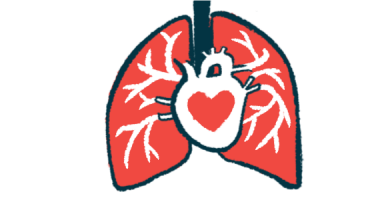Respiratory Procedure Eased Breathing in PAH, CTEPH Patients

Adults with pulmonary arterial hypertension (PAH) or chronic thromboembolic pulmonary hypertension (CTEPH) who have trouble breathing at rest or with light activity may benefit from a procedure called respiratory rate modulation, a pilot, single-center study shows.
The three-month procedure also led to lower symptom severity and decreased respiratory rate.
“This could be of importance as even a modest decrease in symptoms and a small increase in physical capacity might make an important change in the [quality of life] for patients with PAH or CTEPH,” the scientists wrote.
The study, “Respiratory rate modulation improves symptoms in patients with pulmonary hypertension,” was published in the journal Sage Open Medicine.
PAH and CTEPH are two forms of pulmonary hypertension. Even when they benefit from successful treatment of altered blood flow parameters, patients still experience shortness of breath and fatigue, thereby warranting further treatment alternatives.
The four components of breathing — ventilation, respiratory regulation, exchange, and transport of gases — all can contribute to dyspnea, or shortness of breath. Pulmonary swelling, heart enlargement, and lower strength in inspiratory muscles are among its potential causes.
Respiratory rate modulation intends to slow the rate of breathing and increase exhalation time relative to inhalation time. Device-guided breathing, used in respiratory rate modulation, has been shown to provide relaxation, well-being, and a decrease in blood pressure in people with high blood pressure. It also has lowered symptoms of dyspnea and fatigue in those with heart failure or PAH.
Aiming to test further whether respiratory rate modulation using device-guided breathing could provide benefits to PAH or CTEPH patients with shortness of breath, researchers in Sweden followed 14 patients, nine with PAH and five with CTEPH. The study was conducted during 2015 and 2016.
The participants had dyspnea at rest or when undergoing light activity (meaning a score of at least 2 on a 5-point scale), and all were on disease-specific treatments for at least three months. Their mean age was 71, 11 were women, and the mean time from diagnosis was four years.
Respiratory rate modulation was performed over 20 minutes once a day for three months. It used RESPeRATE, a device which aims to slow the patient’s respiratory rate by generating musical tones in response to breathing movements. These movements were recorded in real time with a sensor placed around the chest or upper abdomen.
Study assessments were performed at its start, at the end of respiratory modulation, and after three more months. Thirteen patients completed all visits.
The findings at three months showed significantly lower dyspnea score and World Health Organization (WHO) functional class (of symptom severity). Benefits also were reflected in decreased respiratory rate and reduced levels of NT-proBNP, a biomarker of heart failure.
Quality of life improved, but not significantly. Although there was no change in six-minute walk distance — an assessment of exercise capacity — fatigue after the walk and respiratory rate two minutes later decreased significantly.
No adverse responses to respiratory rate modulation were recorded.
At the final visit three months after stopping device-guided breathing, the respiratory rate decrease, as well as the decrease in fatigue and respiratory rate after the six-minute walk test, remained lower than at study start.
Twelve patients said the device was helpful in controlling dyspnea. “This is likely the most clinically significant result of the study and might have contributed to the improvement in WHO functional class and health status,” the scientists wrote. “Thus, as patients take control of the feeling of dyspnoea, this might have a significant effect on how they can perform their daily tasks.”
The participants also said they would like to continue using the device or have access to it in the future and that they would recommend it to other patients.
“While the results … should be interpreted with caution, they do support the notion that improved control of dyspnoea might give patients a better understanding of the symptom and possibly even prevent dyspnoea from occurring,” the researchers wrote.
As for study limitations, the team mentioned the lack of measures to assess the underlying cause of dyspnea and technical problems that made it impossible to objectively assess compliance to use of the device.








